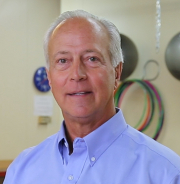Lower back pain is so prevalent in PGA golfers that you can safely say that most all of the players will experience it. The drive to master the most efficient swing demands a tremendous amount from the lower back. To be stable in a flexed posture, supporting torso rotation, and repetitively supporting the golf swing all put the lower back in a vulnerable position. For the amateur golfer whose swing is less efficient and whose body is poorly conditioned, the force of the golf swing on the lower back is magnified.
In fact, any other rotational sport such as tennis, baseball, hockey and lacrosse will have a high probability of lower back complaints. Often our critical thinking as to the assessment process, differential diagnosis, and specific treatment protocol can become dysfunctional, lazy, and ineffective. Every doctor has an exam and treatment format that they have found to be efficient and effective. They use it over and over again and help a lot of people. But is it the most effective format? Does it consider all the causes of lower back pain?
If lower back pain was from doing an activity, are you considering the following?
- Was the activity the cause, ie, too much weight lifted or too many repetitions performed.
- Was the activity performed on a weak, unstable, or inflexible area of the body.
- Did the activity demand too much from other body parts and the lower back was recruited to help, over-extending its capabilities.
If you can answer these questions, you will experience an increase in the effectiveness of your treatments. You will have refined the intent of your treatment regime and your focus will be on the true cause of lower back pain.
It is true that sometimes the lower back plain just gets hurt. A general assessment and treatment approach will work fine and rectify many of these types of lower back pain scenarios. However, if this is your approach you will miss and not be able to help many other athletes with lower back pain. Professional Sports Care estimates that from 2000-2014 thirty to thirty-five percent of lower back pain in PGA golfers was not specifically due to lower back dysfunction. Pain came from dysfunction in other areas of the body that increased demand on the lower back during the golf swing. Based on data of PGA golfers, a basic assessment and treatment approach would only be effective in 65-70% of the lower back pain cases that would come to you. Or, looking at it another way, one-third of the golfers you would treat will leave your care without effective treatment protocol and relief. This should not sit well with your standards of care. Work to think globally and with the detail expected of a specialist working on professional athletes. Your standards of care will reflect how well you influence an athlete’s performance. With PGA golfers you must keep those standards high every time you treat them.

